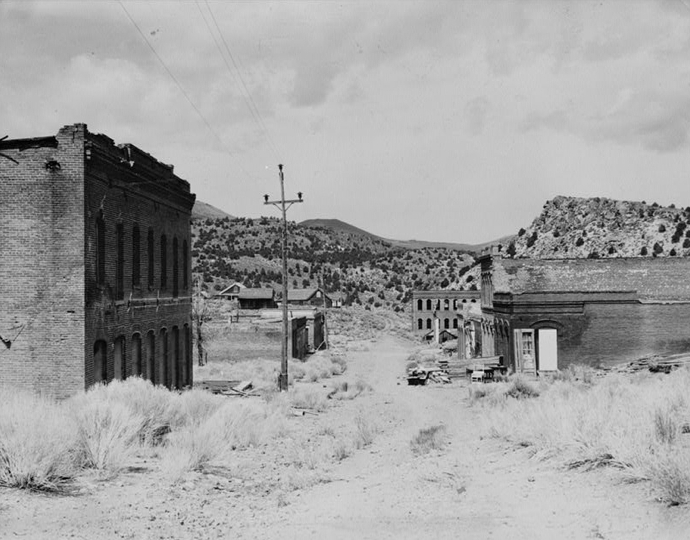Nobody lives in Aurora today although upwards of five thousand people called it home immediately after its founding in 1860. No less a luminary than Samuel Clemens (Mark Twain) called Aurora his home for several months during his mining days. It was a vibrant, successful town along the Nevada / California border. Both states claimed Aurora because of the gold and silver reserves just below the surface worth millions of dollars. That’s often the case when valuable natural resources are at stake. Everyone wants it for themselves and most of the time a condominium arrangement simply won’t work.
The Border
The border between the two states seemed a little iffy. But how could it possibly happen? Two completely straight lines form the border! One runs north-south from Oregon directly down the 120th meridian to the 39th parallel. The other extends from there, heading in a southeastern direction to a point where the Colorado River intersects the 35th parallel. Easy, right?
Well, not so fast. Surveying techniques were not entirely precise as we’ve noted a number of times on Twelve Mile Circle. It didn’t help that 39°N 120°W happened to fall right in the middle of Lake Tahoe. Also, on the other end, the Colorado River tends to shift from time-to-time. This complicated the measurement of the oblique line in particular. Several different surveys occurred and each one produced a slightly different result.
Dispute

Consequently, both states claimed the town of Aurora, located along the oblique border (map). Perhaps that’s understandable under the circumstances. However, more bizarrely, it became the county seat for Mono County, California and what was then a larger Esmeralda County, Nevada than the present version at the same time! A single courthouse served both purposes.
Aurora held local elections in 1862 to determine representation for both counties and states. The same townspeople could vote in both elections. According to the State of Nevada Department of Cultural Affairs:
“During that year, many Aurora citizens participated in the politics of both counties and both states. Dr. John W. Pugh was elected to the Nevada Territorial Legislature and became the President of the Council (similar to the current State Senate). Timothy N. Machin was Mono County’s choice for the California Assembly, of which he became Speaker. Both elected officials were residents of Aurora.”
Resolution
A more precise survey the next year placed Aurora about three miles inside of the Nevada Territory in what today is Mineral County. Even so, some California officials continued to conduct government business in Aurora until 1864 when the Mono County seat officially moved to Bridgeport.
California may have gotten the better end of the bargain. While Aurora may have been the second largest town in the Nevada when the border dispute was resolved in 1865 (Virginia City being larger), its heyday lasted only about a decade. It faded away once the gold and silver ran out. The county seat moved to Hawthorne in 1883. So Aurora became a ghost town by the 1920s.
Now it crumbles and rots into the surrounding terrain.

Leave a Reply